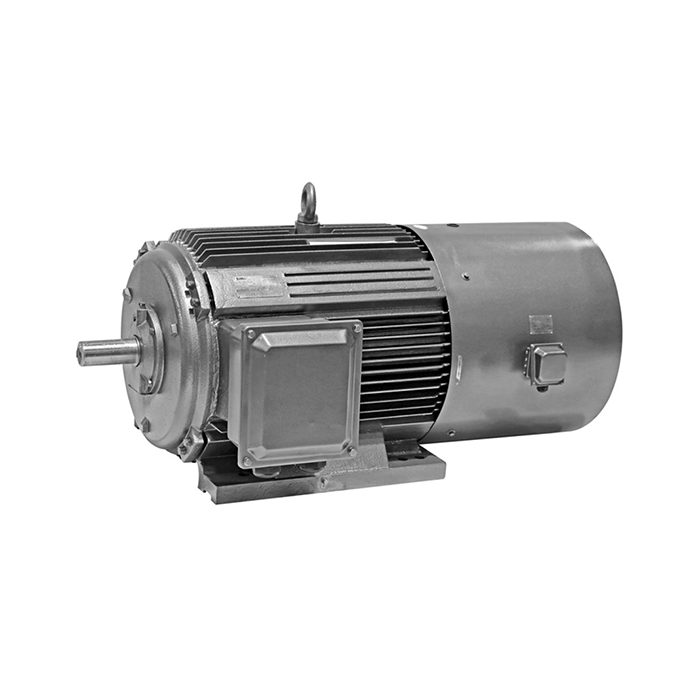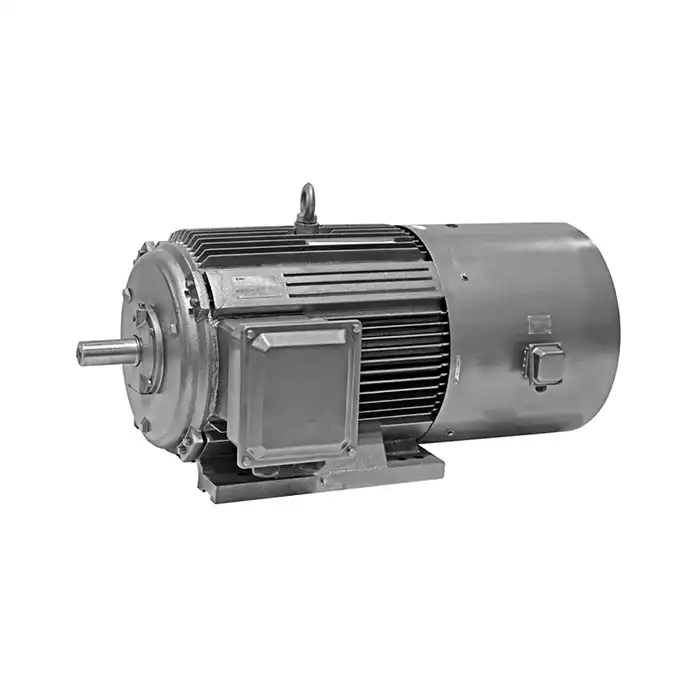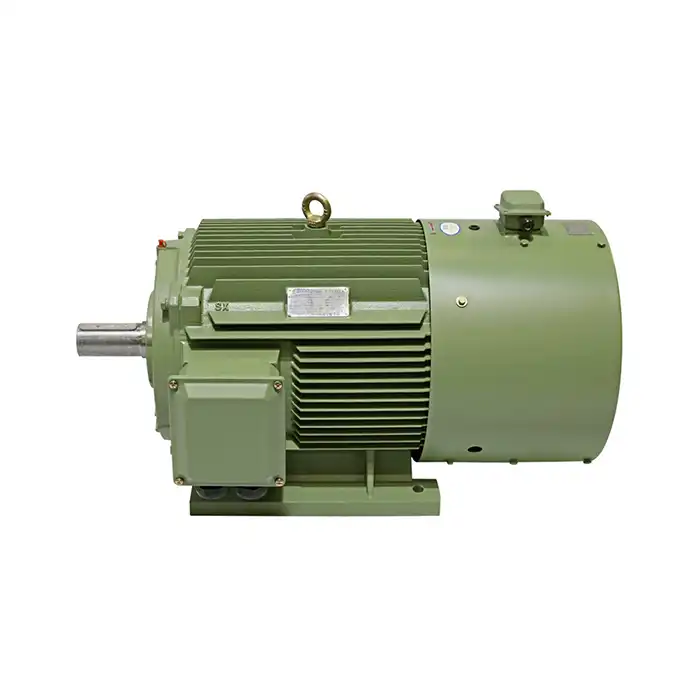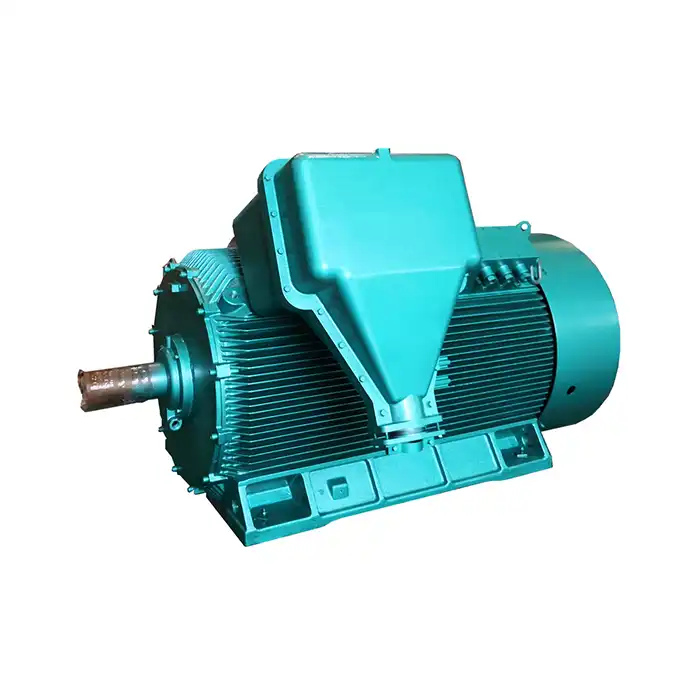Selecting the appropriate 3.3 kv motor requires careful consideration of multiple technical parameters, application requirements, and operational constraints. High voltage electric motors operating at 3.3 kilovolts serve critical roles across industrial automation, power generation, and process control applications. Understanding motor characteristics such as efficiency ratings, torque specifications, cooling methods, and protection systems enables engineers to make informed decisions that optimize performance while ensuring reliable operation in demanding environments.

Series:Y2
Protection level:IP54
Voltage range:3000V±5%,3300V±5%,6000V±5%,6600V±5%,10000V±5%,11000V±5%
Power range:160-1600 kW
Application:fans, water pumps, compressors, crushers, cutting machine tools, transportation machinery, etc.
Advantage:compact structure, light weight, low noise, small vibration, long service life, easy installation and maintenance.
Standard: This series of products complies withJB/T10444-2004 standards.
Others: SKF, NSK, FAG bearings can be replaced according to customer requirements.
Understanding 3.3kV Motor Fundamentals
High voltage motors rated at 3.3 kilovolts represent a crucial component in industrial power systems. These 3.3 kv motors bridge the gap between lower voltage applications and ultra-high voltage installations. The 3.3kV rating provides excellent power density while maintaining manageable insulation requirements.
AC motors dominating this voltage class typically range from 500 horsepower to several megawatts. Induction motor designs offer robust construction and reliable performance across diverse operating conditions. Synchronous motor variants provide precise speed control and power factor correction capabilities.
Motor winding configurations vary significantly based on application demands. Manufacturers utilize specialized insulation systems capable of withstanding voltage stress, thermal cycling, and environmental exposure. Class F or Class H insulation systems commonly appear in these high voltage applications.
Variable frequency drive compatibility becomes increasingly important as industrial facilities pursue energy optimization. Modern VFD systems designed for high voltage operation enable precise motor speed control while maintaining efficiency across varying load conditions.
Critical Selection Parameters
Motor efficiency ratings significantly impact operational costs over the equipment lifecycle. Premium efficiency designs reduce energy consumption while generating less waste heat. Power factor considerations affect utility charges and system stability in large industrial installations.
Torque characteristics must align with load requirements throughout the operating range. Starting torque, breakdown torque, and full-load torque specifications determine motor suitability for specific applications. Heavy-duty applications may require enhanced torque capabilities.
Environmental factors influence motor design selection. Temperature extremes, humidity levels, altitude, and atmospheric contamination affect performance and longevity. Motor enclosure types ranging from open drip-proof to totally enclosed designs address these challenges.
Motor protection systems safeguard against electrical and mechanical failures. Thermal protection, bearing temperature monitoring, and vibration sensing prevent catastrophic damage. Advanced protection packages integrate with plant control systems for comprehensive monitoring.
Application-Specific Considerations
Motors for Industrial Automation
Industrial automation applications require motors with high performance, particularly in environments where frequent starting, precise speed regulation, and dynamic response are essential. In industries like automotive, aerospace, and electronics, manufacturing processes demand motors that can operate reliably under demanding conditions. These industries require motors that are capable of withstanding constant use, offering exceptional reliability, and reducing maintenance downtime. Motors in these sectors are designed to meet the rigorous demands of automation, ensuring smooth operation with minimal disruptions.
Motors for Process Control Equipment
Process control applications, such as pumps, compressors, and fans, rely on motors optimized for continuous duty operation. These motors, like 3.3 kv motors, must be capable of maintaining consistent performance under long operating hours without overheating or experiencing significant wear. For example, in chemical processing environments, motors may need to be designed with explosion-proof construction or specialized materials to resist the corrosive effects of harsh chemicals. Ensuring that motors are suitable for these challenging environments is crucial for maintaining safety, performance, and operational efficiency.
Motors for HVAC and Refrigeration Systems
In HVAC (Heating, Ventilation, and Air Conditioning) and refrigeration systems, high voltage motors are often used to drive large centrifugal chillers and air handling units. These motors must deliver energy-efficient performance while operating quietly to meet the standards of commercial and residential applications. The ability to maintain precise temperature control, combined with low noise output, is essential for maintaining optimal comfort and energy savings in these systems. Motors in this category are designed for long-lasting durability while meeting stringent efficiency requirements.
Motors for Power Generation and Renewable Energy
Power generation facilities, including those involved in traditional and renewable energy production, rely on robust motor designs to drive auxiliary equipment such as boiler feed pumps, cooling water circulation systems, and fuel handling systems. These motors are built to handle the high demands of critical infrastructure and ensure smooth, continuous operation. For renewable energy installations, motors must be able to withstand harsh outdoor environments and adapt to variable operating conditions, such as fluctuating wind speeds in wind turbines or changing solar output in solar energy systems. The ability to perform reliably under diverse conditions is essential for ensuring long-term sustainability in energy production.
Motor Cooling and Thermal Management
Motor cooling methods directly impact performance, efficiency, and service life. Air-cooled designs utilize internal or external fans to remove heat generated during operation. Enclosed motors may incorporate heat exchangers for improved thermal management.
Water-cooled systems provide superior heat removal capabilities for high-power applications. Closed-loop cooling circuits prevent contamination while maintaining optimal operating temperatures. Heat exchanger design affects overall system efficiency and maintenance requirements.
Ambient temperature ratings determine motor suitability for specific installations. Standard designs accommodate temperatures up to 40°C, while specialized versions operate reliably in extreme conditions. Altitude derating factors must be considered for high-elevation installations.
Thermal monitoring systems prevent overheating damage through continuous temperature surveillance. Resistance temperature detectors embedded in motor windings provide precise thermal feedback. Advanced systems integrate with facility automation networks for real-time monitoring.
Motor Control and Protection Systems
Motor starter selection depends on application requirements and system characteristics. Reduced voltage starters minimize inrush current during motor acceleration. Soft starters provide smooth acceleration profiles while reducing mechanical stress on driven equipment.
Variable frequency drives enable precise speed control and energy optimization. High voltage VFD systems require specialized components and installation practices. Harmonic filtering may be necessary to maintain power quality standards.
3.3 kv motor protection relays monitor electrical parameters including current, voltage, and power factor. Sophisticated relay systems detect incipient failures before catastrophic damage occurs. Communication capabilities enable integration with plant-wide monitoring systems.
Motor insulation systems require periodic testing to ensure continued reliability. Insulation resistance measurements, polarization index testing, and partial discharge analysis identify potential problems. Preventive maintenance programs extend motor service life significantly.
Maintenance and Reliability Optimization
Predictive maintenance techniques maximize motor availability while minimizing unscheduled downtime.
Vibration Analysis for Early Fault Detection
Vibration analysis is a crucial predictive maintenance technique that helps identify potential issues before they lead to failure. By monitoring the vibrations produced by the motor, maintenance teams can detect problems such as bearing wear, mechanical imbalances, or alignment issues. Abnormal vibration patterns often signal underlying mechanical faults, allowing for early intervention to prevent costly breakdowns. Regular vibration monitoring ensures that these issues are addressed promptly, helping to maintain motor reliability and performance over time.
Thermal Imaging for Identifying Electrical Problems
Thermal imaging is another powerful tool in predictive maintenance that detects hot spots within the motor. These hot spots can indicate underlying electrical problems, such as faulty wiring, short circuits, or deficiencies in the cooling system. By regularly using thermal imaging, maintenance teams can spot overheating components that may otherwise go unnoticed, allowing for quick corrective action to avoid more serious damage. This proactive approach reduces unscheduled downtime and ensures the motor operates at optimal temperatures.
Lubrication Programs for Bearing Protection
Proper lubrication is key to extending the life and improving the performance of motor bearings. A well-maintained lubrication program ensures that the correct lubricant is used in the proper quantities and that relubrication intervals are adhered to. By preventing premature bearing failure, consistent lubrication practices help reduce friction, wear, and heat buildup. Automatic lubrication systems can further streamline this process, reducing the need for manual intervention while ensuring that bearings are consistently lubricated according to the motor’s specific needs. This contributes to longer motor life and improved operational efficiency.
Proper Storage and Handling for Long-Term Reliability
Motor storage and handling are essential factors in preserving motor reliability and service life, particularly during periods of inactivity. When motors are not in use, it is important to store them under conditions that prevent moisture ingress, which can lead to insulation degradation and rust formation. Space heaters can be used during extended shutdowns to maintain the dryness of motor windings, preventing damage from humidity. Proper storage practices ensure that motors remain in optimal condition, ready for immediate use when needed, thus reducing the risk of failure due to environmental factors.
Documentation and Record Keeping for Trend Analysis
Effective documentation and record keeping are essential for successful predictive maintenance. By maintaining detailed logs of motor performance, maintenance activities, and test results, operators can identify patterns and trends that indicate potential issues. These records provide valuable insights into the motor's condition and help predict future failures before they occur. Regularly reviewing maintenance logs and operating parameters enables teams to make informed decisions about motor care, ensuring that problems are detected early and unscheduled downtime is minimized. This approach not only improves motor availability but also enhances overall operational efficiency.
Conclusion
Choosing the right 3.3kV motor involves careful evaluation of technical specifications, application requirements, and operational constraints. Motor efficiency, torque characteristics, cooling systems, and protection features significantly impact performance and lifecycle costs. Understanding these parameters enables informed decisions that optimize reliability while minimizing operational expenses. XCMOTOR's expertise in high voltage motor applications ensures you receive comprehensive support throughout the selection, installation, and maintenance phases. Our commitment to quality products, technical excellence, and customer satisfaction makes us your ideal partner for critical power equipment needs.
Get Expert Guidance from XCMOTOR for Your High Voltage Motor Needs
Navigating the complexities of 3.3kV motor selection requires expertise and industry knowledge. XCMOTOR specializes in providing comprehensive power equipment solutions tailored to your specific application requirements. Our team understands the unique challenges faced by industrial automation, HVAC, energy generation, and process control applications.
When partnering with a trusted 3.3 kv motor supplier, you gain access to original products from established manufacturers, ensuring reliability and performance. XCMOTOR's commitment to quality extends beyond product delivery through dedicated technical support and comprehensive after-sales service.
Our engineering experts evaluate your application parameters, environmental conditions, and performance objectives to recommend optimal motor solutions. Whether you require standard industrial motors or specialized designs for challenging environments, we provide personalized guidance throughout the selection process.
XCMOTOR offers fast delivery capabilities, 30-day return policies, and dedicated support including weekend availability. Our technical team assists with motor sizing, protection system design, and integration requirements to ensure seamless installation and commissioning.
Ready to discuss your high voltage motor requirements? Our specialists are available to provide detailed technical consultations and competitive quotations. Contact us at xcmotors@163.com to begin exploring how XCMOTOR can optimize your power equipment solutions.











